#volkswagen hybrid modelle 2020
Explore tagged Tumblr posts
Text
From Classic to Electric: The Transformation of Iconic Car Models
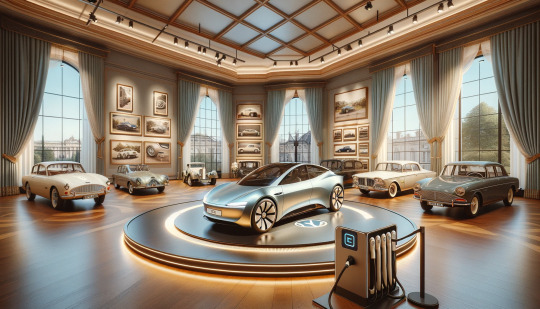
Electric Revolution in the Automotive Industry
The automotive industry is undergoing a monumental shift, transitioning from the roar of gasoline engines to the hum of electric motors. This transformation is not just about the emergence of new electric vehicle (EV) brands, but also about the electrification of some of the world's most iconic car models. This transition to electric power is driven by a combination of environmental concerns, advancements in battery technology, and changing consumer preferences. The journey from classic internal combustion engines to electric powertrains has been both challenging and exciting, reshaping the automotive landscape as we know it.
The Resurgence of the Volkswagen Beetle
One of the most beloved car models in history, the Volkswagen Beetle, has made a comeback in an electric avatar. Originally launched in the 1930s, the Beetle became a symbol of simplicity and reliability. In recent years, Volkswagen announced plans to revive the Beetle as an electric car, part of its broader strategy to introduce more electric models. This new electric Beetle aims to combine nostalgia with modern EV technology, appealing to both classic Beetle lovers and new-age environmentalists. While retaining its iconic shape, the electric Beetle is expected to feature advanced technology like fast charging and a substantial range, catering to the needs of today's EV market.
The Electric Transition of the Ford Mustang
The Ford Mustang, an emblem of American muscle cars, has also embraced electrification. The Mustang Mach-E, an all-electric crossover, marks a significant departure from the classic Mustang's V8 engine tradition. Launched in 2020, the Mach-E combines the Mustang's legendary performance with the benefits of electric propulsion. It offers a range of up to 300 miles on a single charge and accelerates from 0 to 60 mph in just 3.5 seconds. The Mach-E has been well-received, signifying a successful blend of an iconic legacy with futuristic technology.
MINI Cooper's Electric Makeover
The MINI Cooper, known for its distinctive design and agile handling, has also joined the electric wave. The launch of the MINI Electric brings a new dimension to this British icon, maintaining its classic aesthetics while integrating cutting-edge EV technology. With a range of around 145 miles per charge and a 0 to 60 mph time of around 7 seconds, the MINI Electric retains the brand's fun-to-drive character. This transition reflects the brand's commitment to sustainability while preserving the essence that has made the MINI a popular choice for decades.
Porsche's Electrification with the Taycan
Porsche, synonymous with high-performance sports cars, has made a bold entry into the EV market with the Taycan. The Taycan is not just Porsche's first fully electric car but also a powerful statement in the luxury EV segment. With its exceptional performance, delivering up to 750 horsepower in the Turbo S model, and a range of up to 227 miles, the Taycan has set new standards for electric sports cars. It represents how traditional sports car manufacturers are adapting to the electric era without compromising on performance and luxury.
The Transition of Supercars to Electric Power
The shift to electric is not limited to mass-market models; even supercars are getting electric makeovers. Brands like Ferrari and Lamborghini, known for their powerful engines and exhilarating performance, are exploring electric and hybrid models. The move towards electrification in supercars is particularly significant, as it challenges the traditional notion that electric vehicles can't match the performance of gasoline-powered sports cars. This transition is a testament to the advancements in EV technology, where electric motors can deliver instant torque and unmatched acceleration.
Challenges and Future Prospects
Despite the excitement, the transition from classic to electric models poses significant challenges. These include maintaining brand identity, meeting consumer expectations for performance and range, and managing the higher production costs of EVs. However, the future looks promising as battery technology continues to improve, charging infrastructure expands, and public acceptance of EVs grows. The transformation of these iconic car models into electric versions is not just a trend but a glimpse into the future of transportation, where sustainability meets style and performance.
5 notes
·
View notes
Photo
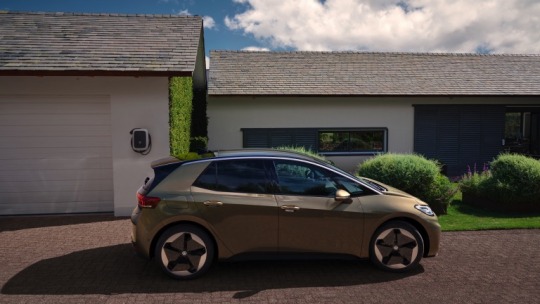
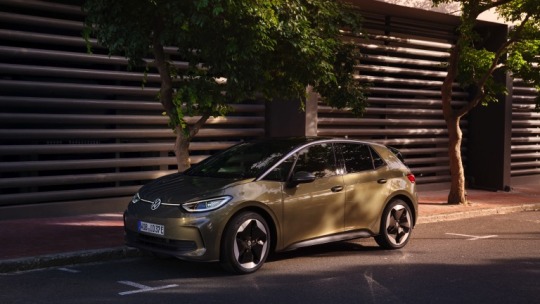
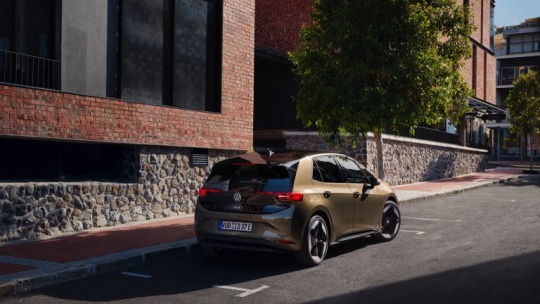

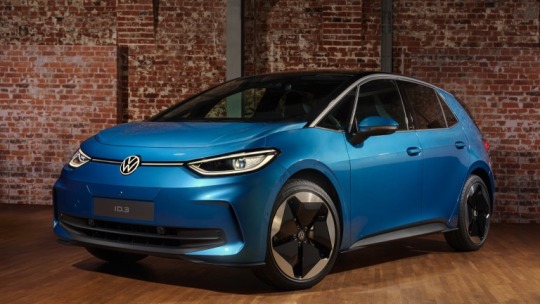
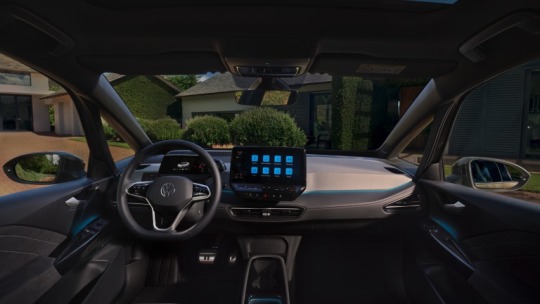
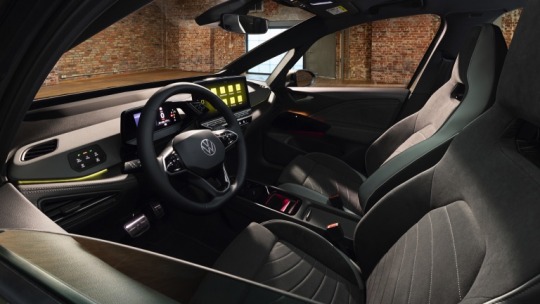
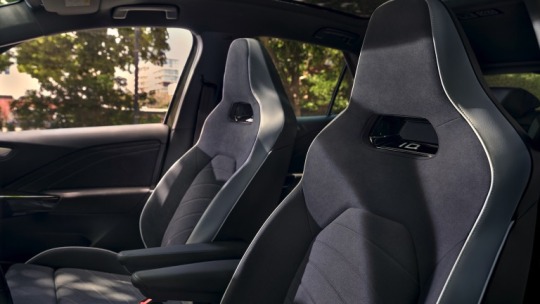
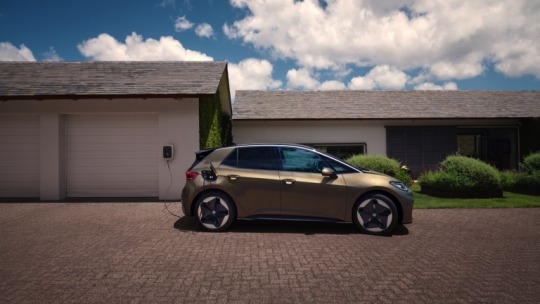
One of the best things about electric cars in 2023 is that we are now seeing 1st generation models from the “early years” being improved, revised and facelifted. For the early-adopters in the UK’s EV market, we are grateful for those consumers and businesses for having the foresight and courage to invest into all-electric technology in 2018 / 2019 / 2020, when little was known on how good this form of transport would be (and when public charging infrastructure was still in its early inception). And VW’s electric Golf replacement, the ID.3, was first shown to the world in 2016 before being pushed into production in 2019 with deliveries taking place around 2020 around Europe (including the UK). As one would expect, the ID3 was fairly popular, amassing some 11,032 registrations in 2021 (it was the 3rd best-selling EV in the UK) followed by becoming the 4th best-selling UK EV with 9,178 registrations in 2022! (see SMMT for more details - https://media.smmt.co.uk/). Launching with a Pure battery (45 kWh), Pro battery (58 kWh) and Pro S configuration (77 kWh), VW’s all-electric hatchback filled a necessary hole in the UK’s automotive market, which was historically dominated by SUVs and luxury / prestige options. Winning awards, like the Which? Best Buy of 2023 (https://www.which.co.uk/reviews/new-and-used-cars/volkswagen-id-3-2020), does prove that this is very much the zero-emission Golf equivalent.
But the “future of driving” is not a completed model and the German group have now confirmed a series of external, integral and technological improvements to this popular EV (see VW - https://www.volkswagen.co.uk/en/electric-and-hybrid/electric-cars/the-new-id3.html). As the “evolution of electric mobility” continues, the brand have confirmed some truly existing updates including:
Exterior - new colours such as Dark Olivine Green, sharper profile at the front together with new tail light clusters and dynamic turn signals plus IQ.Light LED matrix headlights set to be offered. New alloy options including the 19” Wellington and 20” Sanya alloys, a new Exterior Package will allow drivers to add LED matrix headlights with automatic lighting control, LED tail lights, illuminated strip between headlights and tinted rear windows. An Exterior Packages PLUS includes a panoramic roof and sun blind;
Interior - increased options on the dash and door trim, together with higher quality finish. Ability to upgrade to the optional electric seats with massage function and high-quality fabric. New panoramic glass roof with “heavenly views” and sunblind; and
Technology and safety - 8-colour ambient lighting, Travel Assist with adaptive lane guidance and predictive cruise control, Emergency Assist, Area View with 4 cameras, Adaptive Cruise Control, Lane Keeping Assist and Park Assist Plus can all be added to your new ID3.
Not unlike many other brands, the ID.3 will be utilising over-the-air updates for continual improvements coupled with the We Connect ID app for synergising your vehicle to your mobile device. Many EV customers enjoy the facility to start and stop charging, or warm their vehicle, from the comfort of the app.
2 notes
·
View notes
Text
BEST CARS (update) (edit) - autod-final - new version
Minul pole raha et autot osta. (aga norm auto peab olema - Midagi pole arusaamatut) ( Üks ameeriklanna vastas ka et, wtf Kas sa oled tuleviku-lennuki-piloot ja pani bloki, .. - Vist mingid mängud, ma arvan. BOLT-taksot ma ka sõita ei saa - kliendid panid "madala hinnangu" ) info eest võiks "Aitäh" öelda, mitte "mind ei huvita" "käi putsi, mul on mäng pooleli" vms
BEST CARS (update) - hetke lühi-kokkuvõte: Google Search , wikipedia, youtube -
siis võtad oma Mercedese skänneri kaasa ja lähed saksa
kontrollitud ajalugu (history) auto-esinduses warranty (Toyota garantii USA's 10 aastat)
Audi saab kiirteel juhitavuse tagasi - ESP ABS jms Volvo vedrustus/sillad on head - alumiiniumist õõtshoovad jms .. jne
(( Car criteria must be - Simple Economical Easy-To-Fix (efficient, comfortable, reliable) ))
MAINTENANCE COSTS (hooldus)
www.edmunds.com/tco.html TCO (Total Cost to Own) Ownership Costs: 5-Year Breakdown
Auto vanus - 5-10 aastat, Maksimum läbisõit 150 000 - 190 000
auto24.ee mobile.de nettiauto.fi autorola.eu
www.theparking.eu
Holland, Belgia, Rootsist või Saksamaalt
!!! a hybrid vehicle defies the purpose of owning an Electric Vehicle … Efficiency and Reliability figures arise only from electric efficiency and the fact that EV doesn't have an Internal Combustion Engine !!! (Hübriid trotsib elektrisõiduki omamise eesmärki … tõhususe ja töökindluse näitajad tekivad ainult asjaolust, et EV -l pole sisepõlemismootorit)
Mercedes-Benz Vision EQXX - most efficient car ever made
1,75 eur liiter 95, 98, diisel Tallinnas 0,35 €/kWh Alexela laadija 35 senti kWh - 6,3€/100km Volt ülikiire 24 senti kWh - 4,3€/100km Eleport tava $0.12/kWh for electricity at home in California $3.50/gallon for gasoline.
! Tesla laadimine USA's tasuta !
====================
--- Electric EV ---
2023 Cadillac Lyriq 2024 Chevrolet Equinox EV Audi RS e-tron GT Audi Q4 e-tron Audi SQ8 e-tron BMW iX BMW i4 Porsche Taycan Tesla Model 3 - ! Tesla laadimine USA's tasuta ! Tesla Model Y - ! Tesla laadimine USA's tasuta ! Hyundai IONIQ 5 Kia EV6 Honda e Nissan Leaf MG ZS EV MG MG5 EV Opel Mokka-e Mercedes-Benz EQS Mini Electric Jaguar I‑PACE Skoda Enyaq iV Renault Megane E-Tech electric Peugeot e-2008 Volkswagen ID.3 vw e-up vw e-golf VW ID. Buzz Ford F-150 Lightning ev Chevrolet Silverado EV
Volvo XC40 Recharge
====================
2021 Volvo XC60 Recharge Plug-in Hybrid T6 Essential AWD Geartronic 2020 Volvo V60 Cross Country D4 AWD Automat Momentum Kombi - 24000eur 2020 Toyota Harrier Plug-in Hybrid (lithium-ion battery) Lexus RX 450h+ PHEV - USA's populaarne Lexus NX
2020 Mercedes GLE 450 (m256 inline6) 2022 Mercedes GLC 350e PHEV hybrid plugin
====================
--- >>> 2010-2012 GLK 250 CDI 4MATIC BlueEFFICIENCY <<< --- 2015 Mercedes GLK 220 CDI BlueTEC 4Matic >> OM651.921 (2.1) diesel !! << GLK 220 CDI !!! <<< <<<
BEST CAR EVER MADE - Mercedes-Benz G-Klasse AMG Geländewagen
1996–1998 Mercedes S-klass S320 (W140) 300 SE/300 SEL , S 320 (M104 Straight-6 engine 190–276 hp) -- not economical 2018 KIA Optima diisel 15000eur 2011 MB ML350 2020 Mercedes-Benz GLE350 4MATIC 2022 Subaru Crosstrek Plug-In Hybrid Subaru WRX impreza STi BMW X5 Audi S5 Audi S7 Mercedes CLS AMG Lexus IS 300h
Audi A4 2.5TDI Audi A4 2008-2016 3.0L V6 TFSI - Audi vajab ennetavat hooldust ja teadmisi Audi Q5 Toyota Prius 2010 Toyota Camry hybrid Toyota RAV4 Ford Mondeo 2001-2003 Mercedes C-klass Mercedes-Benz V Honda Jazz 2009 2nd Gen Honda Accord 2003–2006 K20A6 Honda Accord 2003-2008 2.4i vtec Honda cr-v Lexus IS 200 Lexus is 250 2008 2nd gen Volvo v50 T-5
====================
Takso sõitmiseks: Toyota Camry hybrid (palju toodetud, sobib taksoks) MB E-klass 2012-2014 (palju toodetud, sobib taksoks)
====================
auto.geenius.ee Kasutatud autode TOP 15: need pruugitud sõidukid pakuvad Eesti lugejale enim huvi
BMW 3. seeria E9x
Škoda Superb
Mercedes V-klass
BMW X3
Dodge Challenger SRT
Volkswagen Passat B8
Subaru Outback
Mercedes-Benz GL-klass
Jeep Grand Cherokee
Volvo XC70
Ford Mondeo
Mazda 6
Audi A6
Chrysler Grand Voyager
Volvo XC90 ja Volvo S90/V90
0 notes
Text
Electric Vehicle Market - Forecast(2024 - 2030)
Electric Vehicle Market Overview
Electric vehicle market size is valued at USD 171.35 billion in 2020 and is expected to reach a value of USD 726.14 billion
by 2026 at a CAGR of 27.19%
during the forecast period 2021-2026. Plug-in Hybrid Electric Vehicles is modern electric propulsion, consisting of electric machines, power electronic converters, electric energy sources such as fuel cells and storage devices, and electronic controllers. The automotive Manufacturers have been driven to supply electric Zero Emission vehicles all over the world due to electric vehicle market trends such as rising demand for low-emission and governments encouragement towards long-range, zero-emission vehicles via subsidies and tax refunds which is estimated to boost the electric vehicle market size. Major players such as Tesla, ford, General motor and others are focused on increase of investment towards EV production. For instance Ford is investing $1 billion in an electric vehicle production facility in Cologne, Germany; this investment will transform the existing vehicle assembly operations into the Ford Cologne Electrification Centre for the manufacture of electric vehicles. Moreover Indian government to boost electric mobility over Internal Combustion engine based vehicles in the country announced to support 15.62 lakh electric vehicles through subsidies and have implemented a budgetary support of ₹ 10,000 crores. APAC is expected to hold large share in the electric car industry analysis estimation, with China accounting for half of the vehicle sales. The electric vehicle industry analysis, particularly the global electric commercial vehicle market will be driven by this rising investment.
Report Coverage
The report: “Electric Vehicle Market Forecast (2021-2026)”,
by IndustryARC covers an in-depth analysis of the following segments of the Electric Vehicle Market Analysis.By Vehicle Type
– Passenger Cars, Commercial VehiclesBy Components
– Motors, Electric Engine, Drivetrain, Power Conditioner, Battery, Controller, Other componentsBy Vehicle Class
- Luxury, Mid-pricedBy Vehicle Drive Type
- Front-Wheel Drive, Rear Wheel Drive, All-Wheel DriveBy Geography
- North America (U.S, Canada, Mexico), Europe (Germany, UK, France, Italy, Spain, Belgium, Russia and Others), APAC(China, Japan India, SK, Aus and Others), South America(Brazil, Argentina and others), and RoW (Middle east and Africa)
Key Takeaways
Growing awareness towards reduction of harmful emission and fuel efficiency is significantly driven by the global electric vehicle market during the forecast period 2021-2026.
The governments incentives such as cheap or no registration fees, as well as exemptions from import tax, sales tax, and road tax are estimated to spur the electric vehicle market size.
APAC is analysed to grow at highest CAGR during the forecast period owing to the growing government involvement and presence of original equipment manufacturers.
Global Electric Vehicle Market, By Region, 2021

Electric Vehicle Market Segment Analysis – By Vehicle Type
The EV passenger Vehicle is set to have the largest market share globally. This is owing to the governments' considerable backing for passenger electric vehicles in the countries. EV passenger vehicle is estimated to have the considerable share in APAC market owing to the presence of original equipment manufacturers and other automaker. The adoption of EV passenger car is increasing due the factors such as reduced emission, higher fuel efficiency.
Request Sample
Electric Vehicle Market Segment Analysis – By Vehicle Drive Type
Rear Wheel Drive EV demand has risen in all regions, particularly in Asia Pacific and Europe. This is due to the fact that it is easier to drive and there is an increasing demand for these vehicles. North America has also experienced a faster increase in these vehicles, with Tesla Model 3 Standard, BMW i3, Volkswagen ID4, Porsche Tycan, and other models. The expansion of RWD electric vehicles is expected to accelerate in the future decade. Moreover the market for AWD is likely to increase as the demand for better ride handling and traction control grows. Continuous development of a three-motor AWD system for EVs is projected to boost the global electric vehicle market.
Electric Vehicle Market Segment Analysis – By Geography
Asia Pacific has the largest electric vehicle market for passenger automobiles, followed by Europe and North America. China being the world’s largest EV producer, around 90% domestic OEMs currently dominate the Chinese EV market. To encourage residents to change to electric vehicles, the city of Beijing, for example, exclusively offers 10,000 registration licences for combustion-engine vehicles per month. Moreover MEA countries have begun to expand their electric vehicle markets, and they are likely to be the fastest-growing in the future years.
Inquiry Before Buying
Electric Vehicle Market Drivers
Increase in demand for fuel-efficient and low emission vehicles
The demand for fuel-efficient automobiles has recently increased as the price of gasoline and diesel has risen. Petrol and diesel are non-renewable sources hence the concern for developing alternative source of fuel is increasing which is further expected to increase the production of electrical energy vehicle. The Stringent CO2 emission norms have increased the demand for electric vehicles; these vehicles are environment friendly which has zero emission technology. The factors such as higher fuel economy, low pollution rate, smoother driving experience, reduced engine sound are driving the market for electric vehicle.
Initiatives by the government to promote electric vehicles
Government initiatives steps toward investment in Electric Vehicle market for promoting reduction of vehicle emissions is paramount. For instance in 2017, the United States government spent $5 billion to develop electric vehicle infrastructure, such as charging stations. Several governments are offering a variety of incentives, including cheap or no registration fees, as well as exemptions from import tax, sales tax, and road tax. Furthermore, countries such as Germany are heavily investing in EV sales promotion such as an amount of 6.5 billion will be provided by Germany for electric-car charging infrastructure.
Buy Now
Electric Vehicle Market Challenges
Inadequate uniformity of E.V charging infrastructure
One of the major challenges of Zero emission vehicle market is the Inadequate E.V charging infrastructure. The rise of the electric car market, as well as variations in charging loads, have highlighted the need for electric car charging station uniformity. Certain electric vehicle charging stations may only work with a specific voltage. For example, level 1 charging stations provide a voltage of 120V AC, whereas level 2 charging stations provide a voltage of 208/240V AC. DC charging stations, on the other hand, use 480V AC to provide quick charging. Fast charging requirements range from country to country. CHAdeMO is used in Japan, while CCS is used in Europe, United States, and Korea, and GB/T in China. Both CHAdeMO and CCS procedures were required by the Indian government. Hence due lack of uniformity across countries may impact the installation of charging stations and hamper the growth.
Electric Vehicle Market Landscape
Technology launches, acquisitions and R&D activities are key strategies adopted by players in the Electric vehicle Market. The market of Electric Vehicle has been consolidated by the major players -Tesla, Volkswagen AG, Nissan Motors, BMW Group, BYD Company motors, General Motors, Chevrolet, Toyota Motor Corporation, Ford Motor, and Mercedes.
Acquisitions/Technology Launches/Joint Venture
In September 2020 Volkswagen with its local Chinese joint ventures FAW Group, SAIC Motor, and JAC, invested USD 17.4 billion in the Electric Vehicles market to support new product releases of Battery Electric and Plug-in Hybrid Electric Vehicles in the market.
In December 2020 the United States, Nissan has revealed the Leaf model for 2021. The car is available with a battery capacity ranging from 40 to 62 kWh. Per charge, the mileage varies between 149 and 226 miles.
In November 2019 BYD debuted the e3 electric vehicle. It has two battery capacities of 35.2 kWh and 47.3 kWh, as well as a single electric motor of 70 kW. The vehicle's range is approximately 252 miles.
For more Automotive related reports, please click here
0 notes
Text
Honda Prelude Returns: The Cool New Hybrid Sports Coupe

Honda is relaunching Prelude in the UK as a hybrid sports coupe that targets young drivers. The sleek and driver-dynamics-focused car is developed from Civic and represents the most recent series of hybrid technology in this niche, showing the commitment of Honda in terms of efficiency without compromising driving pleasure. Honda is to return the stylish sports coupe, the Prelude, to the British Isles. It's a new vehicle that appeals to a youthful driving audience with sleek aesthetics, dynamic precision, and a driver-focused interior. This is going to be Britain's sixth model and the first Prelude sold in this country since 2001.The new car will be in Prelude in mid-2020s, running out as a two-door hybrid based on the popular Civic model. This sets the car apart as being the sole British front-wheel-drive coupe, particularly where similar models by Volkswagen, such as the Scirocco, or Hyundai, like the Veloster, are no longer available.In the words of Honda's President and representative director, Toshihiro Mibe, Prelude is definitely going to be a model committed to sporty driving. The vehicle has a special chassis and engine setup from the driver's experience. Honda just wishes that this car will be able to represent their hybrid technology and be some sort of a highlight amidst their mostly SUV models.Tomoyuki Yamagami, the head of Project Prelude, said that with most car makers zeroing towards SUVs, Honda still remains committed to the joy of driving. According to him, personal mobility must include the fun in driving, and this is the important essence of Honda. Yamagami said that he could feel that Honda can add high efficiency to driving pleasure even in the modern trend moving toward low-carbon. Now Honda has not detailed all the tech specs, but it is anticipated that the Prelude will make use of a version of the Civic hybrid system. Said system has a 2.0-liter petrol engine with assistance from electric motors, pushing a total of 181 horses and good fuel efficiency. There are rumors that the Prelude is getting even a little bit more power for the extra sporty appeal.Most imaginatively, the design will more likely share many basic parts with the Civic: lightweight aluminum frame, wide rear track, and advanced suspension. Prelude is driver-oriented for controllability, drivability, and setting up this emotional link between man and engine, Yamagami encouraged. They had indeed focused on developing the feel and sound of the engine to get a better sense of driving pleasure.The design of the Prelude is centered around being clean and mature in aesthetics to be appealing to younger drivers. Taking its form from gliders, the car consists of simple, aerodynamic surfaces, a long hood, and integrated headlights to make it look wider. It's also designed to sit low on custom 20-inch wheels, complete with blue accents that hint at the car's hybrid nature.Inside, the design of the Prelude is minimalist, much like its slick outside. The interior has not been completely revealed, but it's probably going to remain so simple and practical. Design wise, it's likely to draw some inspiration from the Civic's interior, as in featuring the "man-maximum/machine-minimum" philosophy which leads to physical buttons for easier control, a metal honeycomb mesh replacing the now clichéd air vents, and a neat and modern infotainment system. Yamagami said, "All Honda is trying to create is a car rather emphasizes the driving pleasure utilizing necessary operational equipment", with a statement being made of how Honda's philosophy is making cars not just efficient but enjoyable to drive.In summary, the new Honda Prelude is thrilling for its return to the UK market, exhilarating sleek design curing with advanced hybrid technology, and keeping with its driving pleasure. This is promising for an efficient yet sporty car to any young driver. Read the full article
0 notes
Text
Electric Vehicle Market: Driving Towards a Sustainable Future
The global electric vehicle (EV) market has been witnessing remarkable growth in recent years, driven by increasing environmental concerns, government incentives, and technological advancements. This report provides an in-depth analysis of the EV market, including market size, share, growth, trends, key players, challenges, and future outlook.
Market Size, Share, and Growth
The EV market has been experiencing a significant surge, with sales and adoption rates accelerating across various regions. According to industry data, the global EV market was valued at $163.01 billion in 2020 and is projected to reach $823.75 billion by 2030, registering a compound annual growth rate (CAGR) of 18.2% during the forecast period of 2021-2030.
In terms of market share, battery electric vehicles (BEVs) and plug-in hybrid electric vehicles (PHEVs) are the two primary segments of the EV market. BEVs currently hold the largest market share, accounting for approximately 65% of the total EV market in 2021. However, PHEVs are expected to gain significant traction in the coming years due to their extended range capabilities and the transitional shift towards full electrification.

Market Trends
Several key trends are shaping the EV market:
Government Incentives and Regulatory Policies: Many countries have implemented incentives and regulations to promote EV adoption, such as tax credits, subsidies, and stricter emission standards. These initiatives are driving consumer demand and encouraging automakers to invest in EV technology.
Declining Battery Costs: The cost of lithium-ion batteries, a major component of EVs, has been steadily decreasing due to technological advancements and economies of scale. This cost reduction is making EVs more affordable for consumers and improving their overall value proposition.
Expanding Charging Infrastructure: The deployment of public charging infrastructure is accelerating, addressing range anxiety concerns and enhancing the practicality of EVs. This trend is further boosting consumer confidence and adoption rates.
Increasing Range and Performance: Advancements in battery technology have led to EVs with longer driving ranges, improved performance, and faster charging capabilities, addressing some of the key challenges that previously hindered widespread adoption.
Electrification of Commercial Vehicles: While the passenger vehicle segment dominates the EV market, there is growing interest in electrifying commercial vehicles, such as buses, trucks, and delivery vans, to reduce emissions and operating costs in the transportation and logistics sectors.
Market Players and Market Share
The EV market is highly competitive, with both established automakers and new entrants vying for market share. Here are some of the key players and their respective market shares:
Tesla, Inc.: Tesla is a pioneer in the EV industry and currently holds the largest market share, accounting for approximately 23% of the global EV market in 2021.
Volkswagen AG: The German automaker has made significant investments in EV technology and held a market share of around 12% in 2021.
BYD Company Ltd.: This Chinese manufacturer is a leading player in the EV market, with a market share of approximately 10% in 2021.
Nissan Motor Co., Ltd.: Nissan, known for its popular Leaf EV model, held a market share of around 8% in 2021.
BMW AG, Daimler AG, Ford Motor Company, General Motors Company, and Hyundai Motor Company: These established automakers have also entered the EV market and are competing for market share.
Market Challenges
While the EV market presents significant opportunities, it also faces several challenges:
High Initial Costs: Despite declining battery costs, EVs still have higher upfront costs compared to conventional gasoline-powered vehicles, which can deter some consumers.
Range Anxiety: Although EV range has improved, range anxiety remains a concern for some consumers, especially in areas with limited charging infrastructure.
Charging Infrastructure Deployment: The deployment of public charging infrastructure needs to be accelerated to meet the growing demand for EVs, particularly in rural and remote areas.
Supply Chain Constraints: The supply of critical materials, such as lithium and cobalt, used in EV batteries may face constraints as demand increases, potentially leading to supply chain disruptions and increased costs.
Competition from Established Automakers: As traditional automakers expand their EV offerings, they pose a significant competitive threat to newer EV manufacturers, intensifying market competition.
Regulatory Landscape: The EV market is subject to various regulations and policies related to emissions, safety standards, and incentives, which can vary across different regions and countries, creating complexities for automakers operating globally.
Conclusion
The electric vehicle market is poised for continued growth, driven by increasing environmental awareness, supportive government policies, and technological advancements. While the market faces challenges such as high initial costs, infrastructure limitations, and supply chain constraints, the overall outlook remains positive, with significant opportunities for both established players and new entrants.
As the market continues to evolve, it is crucial for industry stakeholders to closely monitor trends, invest in research and development, and adapt to changing consumer demands. Addressing the challenges associated with EV adoption, such as expanding charging infrastructure, reducing upfront costs, and ensuring a stable supply of critical materials, will be critical for accelerating market growth.
The transition towards electric mobility is not only an environmental imperative but also an economic opportunity. Companies that can effectively navigate the EV market landscape and offer innovative, cost-effective, and sustainable solutions are likely to emerge as leaders in this rapidly evolving industry. By fostering collaboration between automakers, policymakers, infrastructure providers, and other stakeholders, the EV market can overcome existing barriers and pave the way for a more sustainable and efficient transportation future.
#Electric Vehicle Sector#Electric Vehicle Market Forecast#Light Electric Vehicle Market#EV Market growth#Electric Boats market
0 notes
Text
Why Is Europe Generating Highest Demand for Automotive Digital Instrument Clusters?
The surging adoption of automotive digital instrument clusters can be attributed to the burgeoning sales of premium cars across the world. Audi, Lexus, Porsche, Volvo Cars, Land Rover, Infiniti, and Cadillac are some of the most popular luxury car brands in the world. Moreover, the increasing integration of innovative human-machine interface (HMI) solutions in car cabins, owing to the soaring competition among premium car manufacturers, is also boosting the adoption of digital instrument clusters in the automobile industry.

Nowadays, Visteon Corporation, Continental AG, Magneti Marelli S.p.A., Intel Corporation, DENSO Corporation, NVIDIA Corporation, Robert Bosch GmbH, Panasonic Corporation, Delphi Automotive PLC, Nippon Seiki Co. Ltd., and Yazaki Corporation are focusing on product launches and partnerships to offer better digital instrument clusters to automotive original equipment manufacturers (OEMs) and aftermarket suppliers. For example, in January 2018, Intel Corporation and Luxoft together developed a solution for a novel automotive reference platform (ARP) and prototyping platform for advanced driver assistance systems (ADAS) and infotainment.
In the coming years, driverless car manufacturers will extensively use the LCD, thin-film transistor LCD (TFT-LCD), and organic light-emitting diode (OLED) display instrument clusters manufactured by the aforementioned companies. With the increasing focus on this futuristic transportation system, fully automatic vehicles will be adopted at a rapid pace. Thus, the advent of autonomous vehicles will accelerate the integration of digital instrument clusters in such vehicles, as they help in handling large volumes of data generated by such automobiles.
Globally, Europe adopted the highest volume of automotive digital instrument cluster in the recent past, due to the vast sales of electric and premium cars in the region. According to the European Federation for Transport and Environment, in 2020, battery-electric vehicles (BEVs) and plug-in hybrid electric vehicles (PHEVs) accounted for 5.4% and 5.1% of the passenger car sales in the European Union nations. Volkswagen ID.3, Renault Zoe, and Tesla Model 3 are the most widely sold BEVs, whereas Mercedes A250e, Volvo XC40, and e Volkswagen Passat are the top-selling PHEVs in EU nations.
Whereas, the Asia-Pacific (APAC) region is expected to demonstrate the fastest growth in the automotive digital instrument cluster market, in the coming years. This is because the region records the highest electric car sales in the region. Large-scale adoption of such cars can be credited to the favorable government policies supporting the production and sales of EVs in the region. Additionally, the burgeoning adoption of premium cars, primarily on account of the rising disposable income, in APAC will also escalate the need for digital instrument clusters in the foreseeable future.
Thus, the growing adoption of premium cars and ongoing development in autonomous technology will augment the need for digital instrument clusters in the automotive sector in the coming years.
#Automotive Digital Instrument Cluster Market Share#Automotive Digital Instrument Cluster Market Size#Automotive Digital Instrument Cluster Market Growth#Automotive Digital Instrument Cluster Market Applications#Automotive Digital Instrument Cluster Market Trends
1 note
·
View note
Text
Key Players in the Electric Motors for Vehicles Market: A Comprehensive Overview
Introduction:
The electric motors for vehicles market is witnessing significant growth due to the increasing demand for electric and hybrid vehicles. In this blog, we will explore the key players in this market, their past history, growth rate, market size, and other relevant information.
Key Players in the Electric Motors for Vehicles Market :
Tesla: Founded in 2003, Tesla is a renowned player in the electric vehicle market. They have been at the forefront of innovation and have gained significant market share in recent years. With an emphasis on sustainability and performance, Tesla has disrupted the automotive industry. In 2020, their revenue was $31.5 billion, with a CAGR of 49%.
Volkswagen: As one of the world's largest automobile manufacturers, Volkswagen has been making strides in the electric vehicle space. They have launched several electric models under the ID series and are investing heavily in electric vehicle technology. With a rich history dating back to 1937, Volkswagen continues to be a major player in the market. Their revenue in 2020 was $218.3 billion, with a CAGR of 3.6%.
BYD: Founded in 1995, BYD is a Chinese manufacturer specializing in electric vehicles and rechargeable batteries. They have established themselves as a global leader in the electric vehicle market and have been recognized for their technological advancements. BYD's revenue in 2020 was $22.6 billion, with a CAGR of 23.5%.
ZF: ZF is a German company that specializes in driveline and chassis technology as well as active and passive safety technology. They offer a range of electric motor solutions for the automotive industry. With a history dating back to 1915, ZF has built a strong reputation for innovation and quality. In 2020, their revenue was $36.3 billion, with a CAGR of 2.4%.
Bosch: Bosch is a global leader in technology and services, including the electric vehicle market. They provide various components and systems for electric vehicles, including electric motors. With a history spanning over 130 years, Bosch has a diverse portfolio of products and solutions. Their revenue in 2020 was $67.9 billion, with a CAGR of 3.6%.
Hasco: Hasco is a leading Chinese manufacturer of electric vehicle motors. They offer a wide range of products, including permanent magnet synchronous motors for electric vehicles. Hasco has gained recognition for their quality and reliability in the market. However, specific revenue figures and CAGR data for Hasco are not available.
Broad-Ocean Motor: Broad-Ocean Motor is a major player in the electric vehicle motor market. They provide a wide range of motors, including AC induction motors and permanent magnet synchronous motors. With a focus on technological advancement, Broad-Ocean Motor has established a strong presence in the market. Specific revenue figures and CAGR data for Broad-Ocean Motor are not publicly available.
Conclusion:
The electric motors for vehicles market is witnessing significant growth, with Tesla, Volkswagen, BYD, ZF, and Bosch among the key players. These companies, with their rich histories, technological advancements, and focus on sustainability, continue to shape the future of electric vehicles.
0 notes
Photo
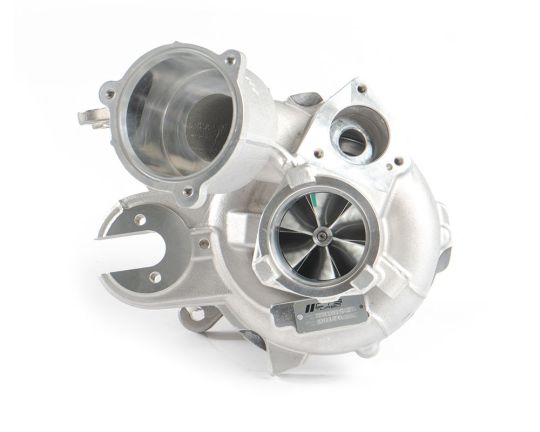
New Post has been published on https://www.vividracing.com/blog/cts-turbo-release-drop-in-turbo-for-audi-vw-ea888-3/
CTS Turbo Release Drop-In Turbo for Audi / VW EA888.3
We are so happy to announce some good news from CTS Turbo for owners of MQB vehicles. The company has released a budget-friendly-direct-bolt-on hybrid turbocharger for the 2015-2020 MQB platform. The kit is available in our shop for $1,499.99. CTS Turbo as a leading brand in the automotive industry is known for manufacturing and wholesaling performance parts for late-model Audi, BMW, and Volkswagen, their latest release fits all MQB-based EA888.3 vehicles such as:
2015-2019 VW Golf/Sportwagen/Alltrack
2015-2020 VW GTI
2015-2019 VW Golf R
2019-2023 VW Jetta GLI
2018-2021 VW Arteon
2015-2020 Audi A3
2015-2020 Audi S3
2015-2020 Audi TT
2015-2020 Audi TTS
ROW models can vary
This turbocharger will change your driving experience like never before by giving your ride massive power gains and superior performance. With this turbocharger, the engineers at CTS Turbo took successful features from their previous releases and made them better. They kept the journal bearing CHRA from the IS38 turbocharger and increased the thrust bearings and thrust collars by 2 mm, to match the larger wheels and the performance-oriented nature of this upgrade.
They also increased the turbo’s oil passages by 0.72mm and put the turbo through extensive in-house tests to make sure that it delivers the highest performance at different altitudes and climates. Their main goals were to manufacture a turbocharger with fast spool times, massive torque gains, and reliable solid mid-range performance, so its safe to say that the CTS Turbo JB-600 Journal Bearing Hybrid Turbocharger MQB Platform 2015-2020 delivers that and more.
Designed for street use, this turbocharger delivers approximately 600 crank hp, around 520-530whp on E85 and 430-460whp on pump 93 octane**. As a performance upgrade, this turbocharger will do wonders for the power and efficiency of your MQB platform. You should also know that this system is engineered to be very durable and withstand the high-performance demands you intend to put it through.
Features
Perfect street turbocharger upgrade, fantastic spool, and mid-range response
Journal bearing direct-fit CHRA (compatible with all factory oil and coolant lines)
Billet reverse rotation compressor wheel, 53.1mm inducer, 71mm-76mm exducer with extended tip (6+6 blade configuration)
Inconel TD06SL2 reverse rotation turbine wheel, 54mm exducer, 60mm inducer (11 blade configuration)
Stainless Steel proprietary turbine housing, made precisely for factory fitment
VSR Balanced to OE tolerances
Compatible with most tuning solutions for popular hybrid turbos (United Motorsport, Eurodyne, COBB)
Compatible with OE or replacement wastegate actuators
Compatible with OE or aftermarket turbo inlets and turbo outlets, however, we recommend our 2.5″ turbo outlet pipe, see below
Required Parts (Not Included):
Performance downpipe
Performance air intake
Performance intercooler
Factory or aftermarket wastegate actuator
Software tuning for hybrid turbo
Installation hardware for factory turbocharger, listed at the bottom of the page
Recommended Parts (Not Included):
2.5″ turbo outlet pipe
MPI kit and upgraded fuel pump, confirm with your tuner
HPFP upgrade, confirm with your tuner
High-flow exhaust
Notes:
Always follow the proper procedure for checking/adjusting the wastegate actuator when installing the turbo! Recommended wastegate actuator voltage: 3.4V-3.6V
We recommend keeping the boost within 25-28psi, less if you’re limited by fueling or a stock engine. Do not exceed the recommended boost range, as it will reduce efficiency.
Installation must be performed by a qualified technician. Always pre-fill the turbocharger, replace engine oil and filter, and follow proper break-in procedures.
Installation hardware or gaskets (use same install kit as the factory turbo), wastegate actuator, and turbo outlet fitting not included.
Hardware and gaskets required for installation:
06L253039A – Turbo Inlet Gasket
5Q0253115B – Turbo Outlet Seal
WHT007210 -Turbo Mount Nuts (x4)
N90067202 -Turbo Oil Line O-ring (x2)
WHT006112 -Turbo Oil Line Gasket
WHT006113 -Turbo Oil Line Gasket
WHT006114 -Coolant Hose O-Ring
WHT006124 -Coolant Hose O-Ring
WHT005558 -Coolant Hose O-Ring
If you have any questions or you would love to buy products for your MQB platform, please do not hesitate to contact us. You can reach us by phone at 1-480-966-3040 or via email at [email protected].
#Audi / VW EA888.3 turbochargers#CTS Turbo#CTS Turbo JB-600 Journal Bearing Hybrid Turbocharger MQB Platform 2015-2020#CTS turbo turbocharger for Audi / VW EA888.3#turbochargers for MQB platforms
0 notes
Text
Volkswagen Touareg R (2023): discovery of its evolutions in preview
Claiming 462 hybrid horsepower, the sportiest version of Volkswagen’s large SUV is evolving mid-career. As a preview, Auto Moto was able to discover the restyled Touareg R in the open air of northern Sweden. At the start of 2020, the Touareg R became the first Volkswagen model to put on its sporty costume through hybridization. Three years later, he went through the restyling box during a trip…

View On WordPress
0 notes
Text

2022 / 43
Aperçu of the Week:
"Whole Lotta Shakin' Going On"
(Jerry Lee Lewis & Big Maybelle)
Bad News of the Week:
When it comes to Nobel Prizes, I always have a hard time grasping the actual scope of the honorees' work. I simply don't know enough about physics, chemistry, medicine or economics. And literature is simply a matter of personal taste. The situation is different with the Nobel Peace Prize, where I allow myself to have an opinion. When it comes to politicians, also a well-founded one. Therefore, it has always been clear to me that the Nobel Peace Prizes awarded to Henry Kissinger, the trio of Yasser Arafat, Shimon Peres and Yitzach Rabin, or even Barack Obama are not based on actual action worthy of an award, but rather on calculated symbolic politics.
This was also the case with Ethiopian politician Abiy Ahmed Ali, prime minister of his country. The official 2019 citation said he deserved the award "for his efforts to promote peace and international cooperation, and in particular for his determined initiative to resolve the border conflict with neighboring Eritrea." As a father of school children, I know what "making an effort" really means: keeping a low profile, doing what is necessary, and falling well short of one's capabilities. So it was in this case.
At the end of 2020, however, the political conflict between the central government and the regional government of the northern region of Tigray, which borders Eritrea, escalated. Since then, a bloody civil war has been raging (largely unnoticed by the world public) in which massacres by the Ethiopian armed forces have also been documented - under Ahmed's command. But that is not all: since then, the Ethiopian ruler has systematically destroyed infrastructure and, despite the famine, has prevented civilian aid organizations from delivering aid. Amnesty International has published a detailed report that lists sexual violence against more than 20,000 victims, oppression of the Tigrayan minority, war crimes and crimes against humanity.
And what is Ahmed doing? He continues to escalate. In the last two months alone, there have reportedly been more than 100,000 deaths; local observers fear a genocide of the Tigray population. And when secret talks were held under U.S. auspices, reported last week, he rebuffed all peace efforts and deliberately chose to continue the war. This was because Tigray was "the Satan." And even his religious advisor Deacon Daniel Kribet of the Ethiopian Evangelical Church calls for its "eradication." That is exactly what will happen. And everyone continues to look the other way. Too bad there is no natural gas in this region.
Good News of the Week:
It was talked about for a long time, but never made it to an actual decision: a medium-term ban on combustion engines in cars in Europe. Germany, the fetish country, in particular, kept standing on the brakes. The country of Mercedes, BMW, Audi, Volkswagen and Porsche could not even bring itself to introduce speed limits - the last country in Europe to do so. Except for the Isle of Man, where there is not a single freeway. Although there is an undisputed link between speed and traffic accidents, pollution and noise. And as a last resort, people dream of e-fuels, just so they don't have to do without vroom-vroom.
That's over now, because the EU decided this week that from 2035 only zero-emission cars (passenger cars, vans and light trucks) may be sold. In other words, truly climate-neutral vehicles. Period. No more nonsensical hybrid models, no more fleet calculations and other excuses. The only exceptions are vehicles that are already registered, but these will make themselves disappear over the years, partly because the purchase is becoming increasingly unprofitable and spare parts are becoming increasingly rare. 2035 is still a long period of time, but the transformation of an entire key industry with protracted development cycles is no mean feat either. The decisive factor is the fundamental decision on the direction to take.
There is still a long way to go before this can be achieved in other areas, too. There are currently only 70,000 charging stations in Germany, for example. The requirement for complete electrification of car traffic is around one million. The situation is hardly any better in the other EU countries. Not to mention the correspondingly powerful grid and the generation of sufficient green electricity. There it fits into the picture that likewise in this week in Bavaria the rules for the setting up of wind turbines were relaxed. And that in the current development of LNG use, its later usability for hydrogen is always taken into account. Now it seems to start really and seriously with the necessary change of times in the individual traffic.
Personal happy moment of the week:
This week my wife and I started a project with friends. It's about getting off our asses, tackling things. Things that you know make sense. And are good for you. And yet you still have a hard time doing them. Now we want to see if the group dynamic helps us. And at least the first few days feel kind of good. Pressure, but in a strangely positive sense. At first I doubted, now I'm about to become a believer. Even if that means I still have to go jogging tomorrow to have done cardio at least once this week.
I couldn't care less...
...about the wrangling at the highest political level over whether the Chinese shipping company should be allowed to buy into the container port of Hamburg. It's about 24.9 percent! Of the smallest container terminal in Hamburg! And the federal cabinet is seriously debating this! I think this is an exaggerated reaction in the context of "We will never again make ourselves as dependent as we are on Russia for gas - and certainly not for infrastructure". Or to put it another way: this is not about the economic involvement of a foreign company, as it happens every day. But it is about the principle.
As I write this...
...I hear Jerry Lee Lewis, who died yesterday. For me more the King of Rock'n'Roll than Elvis Presley. Especially live, for example with his performance at the Star Club in Hamburg (yes, the one you know from the Beatles), which many consider one of the best live recordings ever. The feuilleton goes into analyses. He was a preacher and a sinner, a perpetrator and a therapist. A grand master of excess and ambivalence. The original punk. "The Killer." The "last man standing." No matter what you can and must accuse him of as a person, as a musician he was remarkable in every way.
Post Scriptum:
I'm a big fan of the arts. And have sympathy for activists who work for the environment, social justice or human rights. Even if they are pushing the envelope of what can still be called "civil disobedience" - like chaining themselves to the gate of a nuclear fuel reprocessing plant to prevent the delivery of radioactive material. But I don't understand this recent trend of throwing tomato sauce or mashed potatoes at works of art and then glueing one hand to the wall in front of them. What can Claude Monet do for the fact that French politics still backs nuclear energy? And Vincent van Gogh for the fact that the Brazilian rainforest is still being cut down?
Making headlines to draw attention to a grievance is fine. But I would like to see a reference to the actual concern. As it is, for example, with the sit-in on a street to protest against car traffic in the city. But throwing a pie at the figure of King Charles III in Madame Tussaud's wax museum while wearing a T-shirt with "Stop oil now!" and not "Royalism is outdated!" doesn't make sense to me. This is what a marketing expert tells you.
#thoughts#aperçu#good news#bad news#news of the week#happy moments#politics#jerry lee lewis#nobel prize#peace#ethiopia#eritrea#tigray#civil war#germany#european union#zero emission#project#hamburg#china#principles#rock and roll#art#activists#civil disobedience#believer#tackling things#traffic#electric cars#abiy ahmed
3 notes
·
View notes
Text
Best family vehicles to purchase 2021
Building the best family vehicle can be more difficult than you may might suspect, given that drivers with kids (and the messes with themselves) will in general request an immense sum from these vehicles.
That isn't to say vehicle producers are tapping out; regardless, the decision confronting purchasers on the chase for a family vehicle is more prominent than at any other time.
We've examined the market as it appears to family vehicle purchasers. Taking a gander at hatchbacks, SUVs, MPVs, cantinas and bequests we've thought of a complete rundown of the best family vehicles at a bargain at this moment.
Family hatchbacks offer extraordinary mileage and a lot of room in a smaller bundle. The best models are incredible all-rounders with a decent blend of characteristics yet numerous purchasers will require the additional room of an enormous family vehicle or bequest.
Here, generally speaking, you get more back legroom, a greater boot and unrivaled significant distance solace, yet you'll pay a smidgen more and efficiency may endure a shot.
For a definitive in adaptable inside space, you'll need a MPV of 5 or 7-seat limit, yet the cutting edge pattern in family vehicles is especially towards SUV and hybrid models.
With these you get the higher driving position and simpler access that comes from the raised ride tallness in addition to light go 4x4 romping capacities, should you need them.
Our rundown incorporates something for everybody, with MPVs like the Citroen Berlingo, and enormous family vehicles like the Skoda Superb and Peugeot 508 that likewise come in home appearances.
Like MPVs, customary enormous family models are sliding as far as notoriety yet don't allow that put you to off, as these ordinary family vehicles offer extraordinary driving elements and many are accessible with crossover power for incredible economy and lower street charge.
On this rundown the new Volkswagen Golf hatchback has been joined by the most recent Vauxhall Insignia, while the Kia e-Niro is making zap standard.
Skoda Superb
Hyundai Ioniq
Peugeot 508
1. Skoda Superb
Skoda has dominated the specialty of understanding its client base and is reliably at the front of the competition to furnish occupied families with precisely the vehicle they need.
The Skoda Superb previously offered a lot of room, solace and refinement, yet the maker has now made the family limo much more alluring with the expansion of the iV module half and half form.
The Superb iV conveys 215bhp and has the potential for 34 miles of all-electric, zero-outflow running. In the event that you keep the battery bested up, running expenses ought to be amazingly low, as Skoda asserts up to 228.5mpg, with CO2 outflows as low as 28g/km.
The Superb proposals as much legroom as some extravagance vehicles, so there's a very sizable amount of space for a family.
The solitary drawback with the iV model is that the boot space is undermined by the area of the vehicle's battery, however there's as yet a helpful 485 liters which ought to be all that anyone could need for most necessities.
2. Hyundai Ioniq
There aren't numerous vehicles discounted that offer crossover, module and full-electric powertrains, however the Hyundai Ioniq marks all the containers for adaptability in such manner.
All models offer a lot of reasonableness at a moderate cost with heaps of standard gear tossed in. save for a car There's bunches of room, sound infotainment and availability, amazing effectiveness and a lot of all-round request and, if proficiency on a careful spending plan is your principle point, the Ioniq is an incredible option in contrast to the Toyota Prius.
The 443-liter boot likewise puts the Ioniq in front of the Prius as far as burden space. This little benefit is helped by a lithium-particle battery pack under the back seat that has permitted Hyundai's specialists to augment gear room.
Clients searching for a top notch family vehicle will be consoled by the Ioniq's full five-star rating from Euro NCAP, while positive input from proprietors in our 2020 Driver Power fulfillment study saw the Ioniq deservedly completed in ninth spot out of 75 vehicles.
3. Peugeot 508
Family vehicles needn't be inadequate in style, and the roadster like Peugeot 508 is demonstration of this - blending appealing plan in with solid refinement. There's a module to equal the Skoda Superb, as well, while all models offer great solace without an over the top trade off in the degrees of reasonableness.
With the current design for SUVs, Peugeot ought to be praised for creating the snappy and lively 508 Fastback. It doesn't offer the most space for a vehicle from this class, however rather conveys head-turning great looks and fun taking care of which ought to furnish sharp drivers with a digit of satisfaction from their family cantina.
The donning topic proceeds inside, where you'll track down a low-set driving position and a bending, plunging run, in blend with Peugeot's omnipresent little controlling haggle Cockpit electronic presentation.
1 note
·
View note
Text
France Electric Car Market size was valued US$ XX Mn in 2019 and the total revenue is expected to grow at XX% from 2020 to 2027, reaching US$ XX Mn.
France Electric Car Market
France Electric Car Market Drivers & Restraints:
French President Emmanuel Macron announced an €8 Bn ($8.8 Bn) proposal on 16th June 2020 to recover the country’s auto industry in the wake of the COVID-19 pandemic. Increasing production & sales of EVs is central to the plan. Auto sales in France fell by about 90 percent in April compared to a year earlier. France will face fierce competition from Germany. France would rise buyer incentives to buy an electric car to €7,000 from €6,000. The aid is also anticipated to include incentives for people to scrap their old vehicles & buy a lower-emission model.
For those in France looking to buy an electric car, the state subsidy is to rise from 6,000 to now 7,000 euros, valid up to a list price of 45,000 euros, only for private consumers & only in the period from June 1 to December 31, 2020. For commercial purchases of electric cars, the premium growths from 3,000 to 5,000 euros – in 2019 more than half of the new car purchases were made by commercial owners. In both cases, the list value of the chosen vehicle must not surpass 45,000 euros to profit from the full premium.
For electric cars which price between 45,000 & 60,000 euros, the bonus is 3,000 euros from 60,000 euros, no bonus at all is approved. Anyone who earns less than 18,000 euros a year, decommissions their old combustion engine & procures a new e-car can also expect a bonus of 5,000 euros as part of the prime à la conversion, i.e. they receive a total of 12,000 euros from the state for the production of a purely electric car. For plug-in hybrids, there is a bonus of 2,000 euros from an e-range of 50 km and up to a list price of 50,000 euros, & the number of charging points in France is to be tripled to 100,000 by the end of 2021.
The French plug-in passenger EV market broke all its earlier records in January 2019, with all-electric models jumping 258 percent to 10,952 units and plug-in hybrid EVs surging 238 percent to 3,813 registrations. Both powertrains beat their preceding bests, adding to a record 14,765 plug-in vehicle registrations.
This brilliant start of the year added to a dropping overall market (-13% year over year), pulled the 2020 plug-in vehicle (PEV) share to an amazing 11 percent share. That’s a big boost from the 2.7 percent of the same month last year, & with hybrid vehicles also jumping (9 percent share last month versus 5 percent in January 2019), 20 Percent of the overall market is already electrified, which is making the pure fossil fuel share dive, & diesel, in particular, is now at a decades-low 32 percent. Looking at January best sellers, the Renault Zoe cracked its registrations record, with 5,331 units in the overall market. That was the key reason for BEVs shining, but it wasn’t the only one, as the Peugeot 2018 Electric vehicle landed with a bang, with 2,537 deliveries.
The objective of the report is to present a comprehensive analysis of the France Electric Car Market including all the stakeholders of the industry. The past and current status of the industry with forecasted market size and trends are presented in the report with the analysis of complicated data in simple language. The report covers all the aspects of the industry with a dedicated study of key players that includes market leaders, followers and new entrants. PORTER, SVOR, PESTEL analysis with the potential impact of micro-economic factors of the market have been presented in the report. External as well as internal factors that are supposed to affect the business positively or negatively have been analyzed, which will give a clear futuristic view of the industry to the decision-makers.
The report also helps in understanding France Electric Car Market dynamics, structure by analyzing the market segments and project the France Electric Car Market size. Clear representation of competitive analysis of key players by Application, price, financial position, Product portfolio, growth strategies, and regional presence in the France Electric Car Market make the report investor’s guide.
visit at-https://www.maximizemarketresearch.com/market-report/france-electric-car-market/65305/
France Electric Car Market, By Technology
• BEV
• PHEV
• HEV
France Electric Car Market, By Product
• Hatchback
• Sedan
• SUV
• Others
France Electric Car Market, By Battery
• LFP
• Li-NMC
• Others
France Electric Car Market, By Battery Capacity
• >201 Ah
• <201 Ah
France Electric Car Market, By End-User
• Shared mobility providers
• Government organizations
• Personal users
• Others
France Electric Car Market Key Players
• BMW
• Mercedes Benz
• Renault
• Mistubishi
• Nissan
• Peugeot
• Smart
• Tesla
• ABB
• Eaton
• AVL
• Alfen
• Delphi Automotive
• Volkswagen.
About Us:
Maximize Market Research provides B2B and B2C market research on
20,000 high growth emerging technologies & opportunities in Chemical,
Healthcare, Pharmaceuticals, Electronics & Communications, Internet of
Things, Food and Beverages, Aerospace and Defense and other
manufacturing sectors.
1 note
·
View note
Text
Top 10 SUVs for sale in 2020
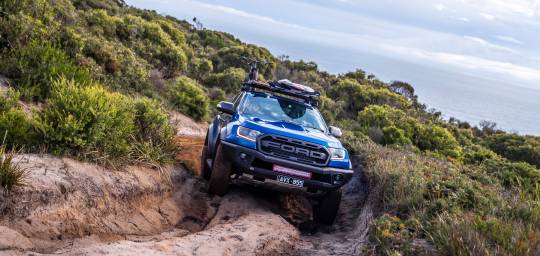

The fashion for crossovers, SUVs or SUVs has had a full impact on our market and the big losers have undoubtedly been off-road cars that have been losing ground in the market over time. Even so, this type of car has a very interesting market niche and there are many who still choose to buy them. That is why in this article we bring you a list of the best off-road or off-road cars that you can currently find on the market and that of course you can configure in our new car offers comparator to receive the best offers from official dealers. Remember that in 24 hours you will receive up to five quotes from official dealers, once you know the one that interests you, you will only have to use our chat and buy your vehicle at the price offered. Still haven't found out? Learn how it works .
[March update 2020] : If you are thinking of buying a 4 × 4 car , take a look at this article first. Below is a ranking of some of the most interesting SUVs that you can find on the market today, from the smallest, such as the Suzuki Jimny, to luxury models, such as the Mercedes-Benz GLE.
Best SUVs for sale in 2020 Suzuki jimny Dacia duster SEAT Ateca Peugeot 3008 Hybrid 4 Hyundai santa fe Skoda Kodiaq Toyota RAV 4 Land Rover Range Rover Defender BMW X5 Mercedes-Benz GLE
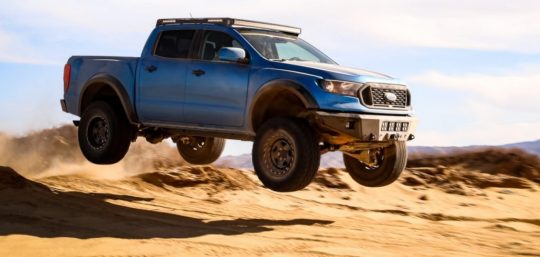
Suzuki jimny The Suzuki Jimny is one of the oldest 4 × 4 cars , having been on the market for almost 50 years. It is currently in its fourth generation and still retains the aesthetic traits of the SUVs of yesteryear. Very square shapes and lines and right angles. The interior has received a technological update, with a 7-inch screen and a multifunction steering wheel. The quality of materials has also improved. It only has a 102 horsepower gasoline engine, coupled with a five-speed manual gearbox with reducer. One of the few remaining authentic SUVs.
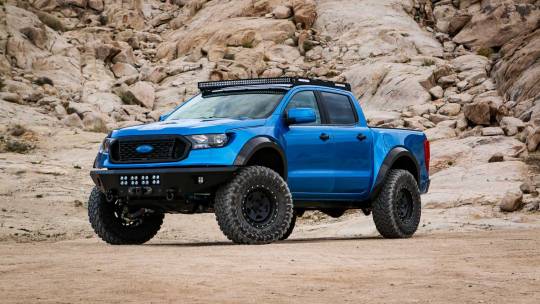
Dacia duster The Dacia Duster is one of our best-selling models and one of the most economical off-road cars . The current generation received a facelift in 2018 that introduced a new 1.2-liter three-cylinder gasoline engine, which delivers 125 horsepower and can be paired with an all-wheel drive system. In addition, it has LED lights, 17-inch wheels and a better finished and refined interior, with a 7-inch screen for the multimedia system, new climate control controls and better quality materials. It is spacious and has a 478-liter boot.

SEAT Ateca One of the star products of the Spanish brand and the one that started the path in the SUV segment for the Martorell house. The SEAT Ateca is starting to be a veteran, but it continues to maintain enviable sales figures. It has a wide range of gasoline and diesel engines, between 115 and 190 horsepower, with manual or DSG automatic transmission and the possibility of having all-wheel drive. To this must be added a spacious interior, a good 485-liter boot in the 4 × 4 version and up to five trim levels.

Peugeot 3008 Hybrid 4 The Peugeot 3008 Hybrid4 is the plug-in hybrid version of the French compact SUV. In this case, with four-wheel drive. It is one of the last to hit the market, since it did so at the end of 2019. It has a 200-horsepower gasoline engine and a 110-horsepower electric engine, which reach a combined power of 300 horsepower. The battery is 13 kWh lithium-ion, which allows a range of 50 km, according to the WLTP cycle.

Hyundai santa fe The Hyundai Santa Fe is positioned in the segment of large seven-seater SUV, being one of the most interesting off-road cars on the market. The current generation appeared in 2018, with a radical change in design, much more modern and striking. The interior gains in technological equipment and habitability and has a 625-liter boot, using five seats. In the superior finishes, it includes electric and heated seats, leather upholstery and many driving aids. It can be chosen with two diesel engines of 150 and 200 horses, the latter with an optional all-wheel drive system and eight-speed gearbox, and a 185-horsepower gasoline engine and 4 × 4 traction.

Skoda Kodiaq The Czech brand debuted in the 4 × 4 car segment with the Skoda Kodiaq , a model that shares a platform with the SEAT Ateca and other Volkswagen Group models. It boasts one of the most spacious cabins, as well as the largest boot in its category, with 720 liters, using five of the seven seats. Mechanically, you can choose with two diesel engines of 150 and 190 horsepower or three gasoline engines, of 125, 150 and 180 horsepower. The more powerful versions can go with four-wheel drive.
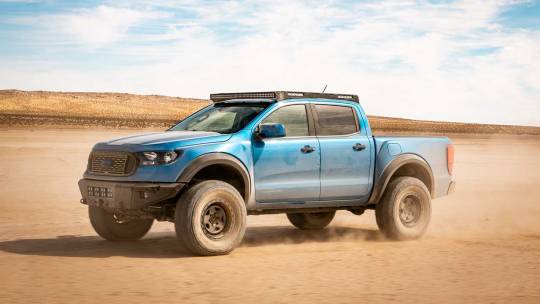
Toyota RAV4 The Toyota RAV4 is one of the most important models of the Japanese brand and one of the creators of the segment of compact SUVs and off-road cars . In 2019 it launched a new generation, built on the new TNGA platform. Inside, he improved materials and habitability. It also stands out for a more complete technological equipment. This 4 × 4 car has the peculiarity that it is only available with a 218-horsepower hybrid powertrain and four-wheel drive. Approves an average consumption of only 4.5 liters.\

Rand Rover Defender Land Rover made a radical change in the new generation of the Defender, a 4 × 4 car that had remained almost unchanged in the aesthetic plane for decades, since 1948. Now it has a design that has little to do with the previous one, although it retains some elements such as round headlights, square shapes, and straight lines. It is available with two diesel engines, 200 and 240 horsepower, one 300 horsepower gasoline and a gasoline version with a mild-hybrid system, with 400 horsepower. Of course, it has all-wheel drive and offers remarkable off-road capabilities.

BMW X5
In 2019, the fourth generation of the BMW X5 arrived , the great off - road vehicle of the Bavarian brand. Design changes mainly affected the larger grille and more angular headlights. Inside, habitability increased, with the option of incorporating seven seats. It has a very complete standard equipment that can be completed with endless options. It can be chosen with two diesel engines, 265 and 400 horsepower, and a gasoline engine, 340 horsepower. All are associated with an eight-speed Steptronic automatic transmission and all-wheel drive.
If you need any kind of off-road cars parts visit Redroo Offroad
3 notes
·
View notes
Photo
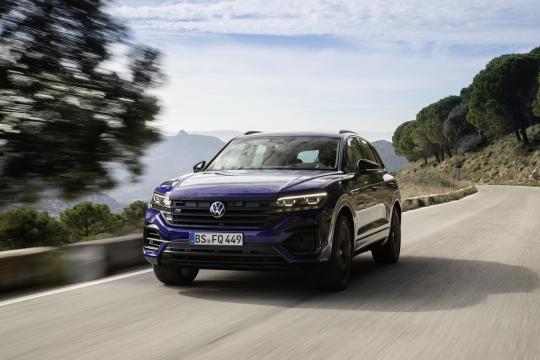
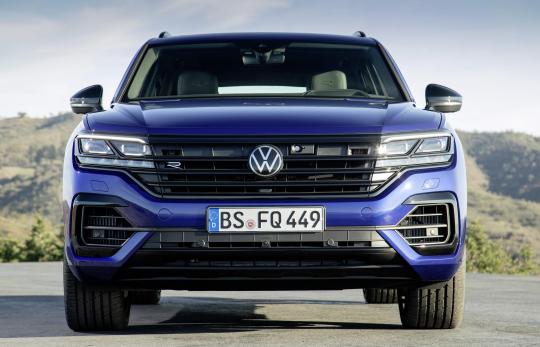


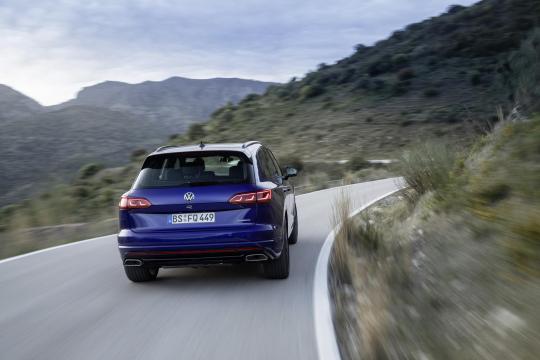
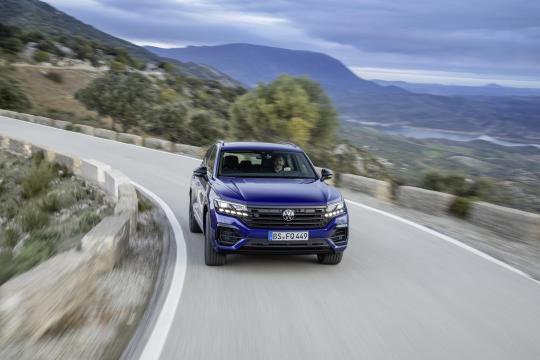
First Look: The Volkswagen Touareg R - Plug-in Hybrid
Volkswagen is set to add a range-topping new premium model to its flagship Touareg line – the Touareg R. The versatile model’s 340 kW (462 PS) plug-in hybrid drive offers an innovative blend of superlative performance and electric efficiency. When the battery is sufficiently charged, the new SUV always starts in the all-electric E-MODE for zero emissions. The battery capacity is designed so that the Touareg R can cover the average daily commute under electric power. Like all Touareg models, the new R version comes with permanent all-wheel drive (4MOTION) as standard. 4MOTION and the powerful drive system (700 Nm of torque) means the Touareg R has also been homologated for a maximum trailer weight of 3.5 tonnes. The premium model can cope with this maxi- mum trailer weight even in E-MODE. As the first plug-in hybrid SUV in the world, the Touareg can also be fitted with the trailer maneuvering system Trailer Assist. And yet another first: the Touareg will be available with Travel Assist for the first time. The premium model will be the first Volkswagen to boast assisted driving (automatic longitudinal and lateral guidance) up to a speed of 250 km/h.
First R model with plug-in hybrid. The new flagship model was designed by the Volkswagen R performance brand, which traditionally develops the sportiest models in the Volkswagen range. The Touareg R represents a paradigm shift – it is the first Volkswagen R model to feature a plug-in hybrid drive. It is also the first time a hybrid model has been the most highly-powered Volkswagen. The extremely well appointed Touareg R, which features the Black Style exterior design package along with 20-inch alloy wheels & R-Line interior trim (including Vienna leather), is set to enter the market in the second half of 2020.
Intelligent electric performance. The Touareg R is the third plug-in hybrid model in Volkswagen’s European product line, following in the wheel-tracks of the Golf and Passat. The Touareg R is the first all-wheel drive model in Volkswagen’s PHEV range, and is also another milestone in the realignment of Volkswagen R that started in 2019. Jost Capito, managing director of the Group’s in-house performance brand, explains: “We are currently vigorously expanding the Volkswagen R range. Following the compact CUV models – T-Roc R1and T-Roc Cabriolet R-Line2 – Volkswagen R is introducing another sport utility vehicle within a very short space of time – the Touareg R, which has a quite unique position and unrivaled charisma.” The Touareg R is synonymous with a new and intelligent level of electric performance in segment of large touring SUVs.
Authentic, avant-garde, practical. Volkswagen R is responsible for the visual and technical configuration, and with it the conceptual direction of the new model. The Touareg R is based on the third generation of the product line launched in 2018, which in turn was an evolution of the model first introduced in 2002. All current Touareg models feature a dynamic and elegant design, maximum safety and long-distance comfort, state-of-the-art connectivity and a largely digitized cockpit. The overall concept is also designed with a high level of everyday usability in mind. Some 60% of all Touareg owners in Germany and 40% in Europe also use their SUV as a towing vehicle – remarkably high figures. The Touareg is often driven by sporty, active people who value the utmost safety, outstanding driving comfort, intuitive control and cutting-edge connectivity. The new Touareg R has been designed specifically for this extremely tech-savvy customer group. For the first time, they now have a performance model that can be driven temporarily in all-electric mode with zero local emissions. The new Touareg com- plies with the Euro 6d-TEMP-EVAP-ISC emission standard.
Extended powertrain range. The SUV product line is currently available with one turbocharged petrol engine (TSI) and three turbocharged diesel engines (TDI). The V6 TSI engine delivers a power output of 250 kW (340 PS)3. As a V6 TDI, the Touareg is available with two output levels: 170 kW (231 PS)4 and 210 kW (286 PS)5. The current most powerful Touareg is a V8 TDI with 310 kW (421 PS)6. Volkswagen is adding a range-topping model in the form of the new Touareg R.
Top R dynamic performance. As a typical Volkswagen R model, the Touareg R provides ultra-dynamic performance. Like at the touch of a button, the driver just has to press the accelerator to access the full output of the electric motor (100 kW/136 PS) and the turbocharged V6 petrol engine (250 kW/340 PS) as required. The two drive systems can then be combined in a boost function to use the vehicle’s dynamic reserves – for instance to over- take another vehicle quickly and safely – and to exploit the full system power of 340 kW (462 PS). The maximum system torque is 700 Nm.
All-wheel drive hybrid. The hybrid drive of the Touareg R essentially consists of a 2,995 cm3 V6 turbocharged petrol engine, the electric drive motor and a lithium-ion battery (energy capacity of 14.1 kWh) built into the luggage compartment underbody. The power electronics convert the direct current of the battery into alternating current for the electric drive motor. An 8- speed automatic gearbox (with Tiptronic) and a transfer box transmit power to the front and rear axles (4MOTION permanent all-wheel drive). A center differential lock with asymmetric dynamic torque distribution (Torsen traction) acts as a transfer box for the flow of forces between the front and rear axle. A maximum of 70% of the drive force reaches the front axle and up to 80% reaches the rear axle.
All-electric drive up to 140 km/h. When first started, the Touareg R uses only the electric motor if the battery is sufficiently charged. This ensures that the SUV comes as close to zero emissions as possible, especially on short journeys. This hybrid strategy also provides the greatest savings potential. The Touareg R can be driven in all-electric mode at a speed of up to 140 km/h; above this, the V6 TSI is activated automatically – or at any time using kickdown. The maximum speed of the SUV is electronically regulated at 250 km/h.
#Volkswagen Touareg R#Volkswagen Touareg#Volkswagen#cars#suv#news#Touareg R#german#hybrids#germany#first look#vw
24 notes
·
View notes
Link
Excerpt from this story from the Wall Street Journal:
Pressure is building on General Motors Co., GM 0.54% Volkswagen AG VOW 1.62% and other major auto makers to deliver on their electric-vehicle plans, as investor enthusiasm for the technology has grown in recent months.
Despite some coronavirus-related setbacks, car companies in the coming months are expected to unleash a wave of new plug-in models in an effort to catch up with Tesla Inc. TSLA -4.54% and meet governments’ tightening restrictions on how much vehicles can pollute.
While there have been some delays and cancellations tied to the health crisis, executives say that longer-term trends make continued investment in this technology a necessity and that the influx will help reduce their more-than-a-century-long reliance on selling gasoline-powered vehicles.
Meanwhile, investors are increasingly placing bets on the growth potential of electrification, including on startups that have yet to sell their first vehicle. Last month, the market value of Nikola Corp., a little-known electric-truck startup that recently went public, briefly surged past that of Ford Motor Co. and other car companies.
Tesla shares have more than tripled in 2020 and are now trading north of $1,500 a share, making it the most valuable auto maker in the world, ahead of GM, VW and Toyota Motor Corp.
“We believe in an all-electric future, and we’re moving aggressively to have vehicles that people want,” GM Chief Executive Mary Barra said on a call with reporters last month.
GM said Thursday that it is developing 20 new electric models by 2023 as part of a $20 billion investment in electric and autonomous technologies. That includes reviving Hummer as an all-electric SUV in early 2022 and building a $2.3 billion battery plant with South Korea’s LG Chem Ltd. in northeast Ohio.
Ford plans to sell a Mustang-inspired, all-electric SUV, and Jeep will offer a plug-in hybrid version of top-selling Wrangler. Both models are due out later this year.
Nissan NSANY -0.69% Motor Co., which is slashing $2.8 billion in costs as part of a global restructuring, revealed a new electric SUV on Wednesday. The company’s stock rose 7.2% following the news.
Auto-industry executives say they have little choice but to press ahead because stricter air-pollution rules in Europe and China require them to reduce tailpipe-emissions or face stiff penalties.
Including hybrids, half of the roughly 350 new models expected to be brought to market in the next few years will be electrified in some way, said John Murphy, senior automotive analyst at Bank of America Corp.
“There’s just no screwing around here by the industry,” Mr. Murphy said. “There’s a real recognition they need to get this done.”
1 note
·
View note